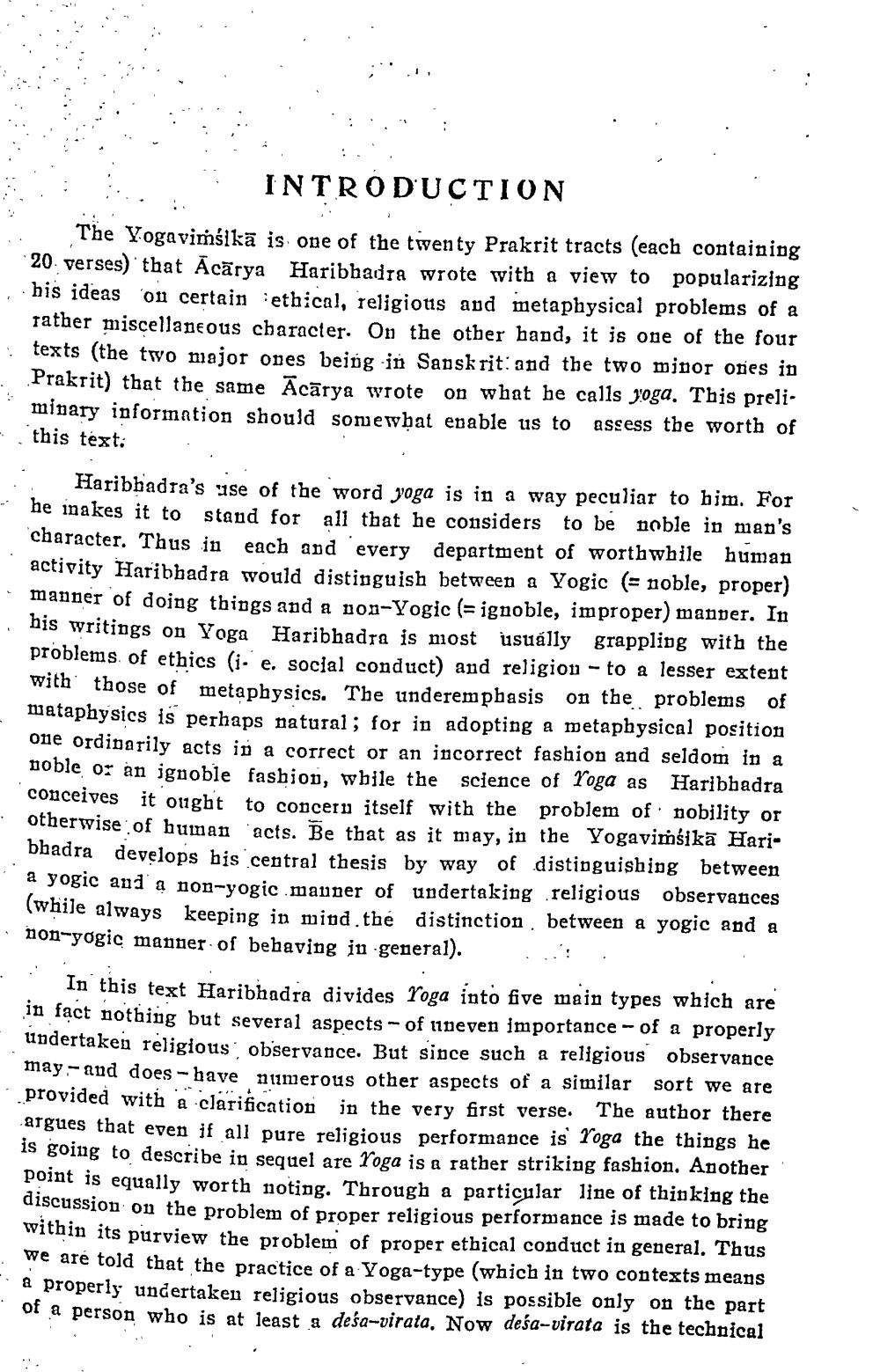________________
INTRODUCTION
The Yogavimślka is one of the twenty Prakrit tracts (each containing 20 verses) that Acarya Haribhadra wrote with a view to popularizing his ideas on certain ethical, religious and metaphysical problems of a rather miscellaneous character. On the other hand, it is one of the four texts (the two major ones being in Sanskrit: and the two minor ones in Prakrit) that the same Acarya wrote on what he calls yoga. This preliminary information should somewhat enable us to assess the worth of
this text.
Haribhadra's use of the word yoga is in a way peculiar to him. For he inakes it to stand for all that he considers to be noble in man's character. Thus in each and every department of worthwhile human activity Haribhadra would distinguish between a Yogic (= noble, proper) manner of doing things and a non-Yogic (= ignoble, improper) manner. In his writings on Yoga Haribhadra is most usually grappling with the problems of ethics (i- e. social conduct) and religion to a lesser extent with those of metaphysics. The underemphasis on the problems of mataphysics is perhaps natural; for in adopting a metaphysical position one ordinarily acts in a correct or an incorrect fashion and seldom in a noble or an ignoble fashion, while the science of Yoga as Haribhadra conceives it ought to concern itself with the problem of nobility or otherwise of human acts. Be that as it may, in the Yogavimśikā Haribhadra develops his central thesis by way of distinguishing between a yogic and a non-yogic manner of undertaking religious observances (while always keeping in mind the distinction between a yogic and a non-yogic manner of behaving in general).
.
In this text Haribhadra divides Yoga into five main types which are in fact nothing but several aspects of uneven importance of a properly undertaken religious observance. But since such a religious observance may-and does - have numerous other aspects of a similar sort we are provided with a clarification in the very first verse. The author there argues that even if all pure religious performance is Yoga the things he is going to describe in sequel are Yoga is a rather striking fashion. Another point is equally worth noting. Through a particular line of thinking the discussion on the problem of proper religious performance is made to bring within its purview the problem of proper ethical conduct in general. Thus we are told that the practice of a Yoga-type (which in two contexts means a properly undertaken religious observance) is possible only on the part of a person who is at least a desa-virata, Now deśa-virata is the technical




